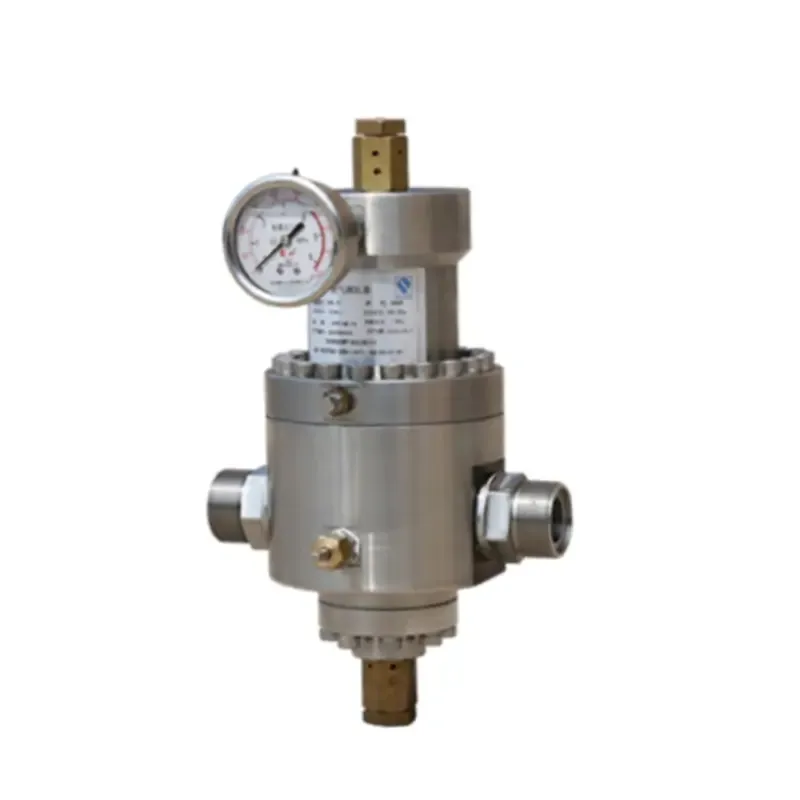
Dec . 05, 2024 00:50
Back to list
pressure reducer
Understanding Pressure Reducers Essential Components in Fluid Dynamics
Pressure reducers are critical devices used in various industries to maintain and control the pressure of gases or liquids within an efficient and safe range. These components are vital in applications ranging from household appliances to complex industrial systems. By regulating the pressure of a flowing medium, pressure reducers ensure the stability and reliability of operations, thus preventing potential hazards and reaching optimal performance levels.
What is a Pressure Reducer?
A pressure reducer, often referred to as a pressure regulator, is a mechanical device designed to reduce the input pressure of a fluid to a predetermined lower level. The main objective of a pressure reducer is to provide a steady and uniform output pressure regardless of the variability in supply pressure. This regulation is essential in situations where excessive pressure could damage equipment or produce unsafe conditions.
Pressure reducers are commonly used in various sectors, including gas distribution, HVAC systems, water supply, and industrial processing. They can handle both gaseous and liquid forms of fluids, making them versatile components in fluid dynamics.
How Does a Pressure Reducer Work?
The functioning of a pressure reducer can be explained through its core components and operational principles. At its heart, a pressure reducer consists of a pressure-sensing element, a control mechanism, and an outlet port.
1. Pressure Sensing Element This component continuously monitors the output pressure. The sensing mechanism is typically a diaphragm or a piston that reacts to changes in output pressure.
2. Control Mechanism Upon detecting a deviation from the set output pressure, the control mechanism adjusts the flow of the incoming fluid. This adjustment can occur through various means, such as a spring-loaded valve or a diaphragm that opens or closes in response to pressure changes.
3. Outlet Port The fluid exits through the outlet port at the regulated pressure. By controlling the amount of fluid flowing through this port, the pressure reducer ensures that the output remains constant.
Applications of Pressure Reducers
pressure reducer

Pressure reducers find applications in multiple areas, showcasing their importance across diverse sectors
- Residential Use In home gas systems, pressure reducers ensure that the natural gas delivered to appliances, such as stoves and heaters, remains at a safe and adjustable level. Maintaining this pressure is crucial for efficient energy use and safety.
- Industrial Processes In manufacturing settings, pressure reducers help maintain the required pressure for pneumatic tools and systems. They also play a significant role in chemical processing, where precise pressure controls impact reaction rates and safety.
- Water Distribution In municipal water systems, pressure reducers adjust and stabilize water pressure throughout the distribution network. This regulation helps prevent pipe bursts and ensures consistent water delivery to households.
Benefits of Using Pressure Reducers
Implementing pressure reducers in any fluid system provides numerous advantages
1. Safety By controlling pressure, these devices help prevent accidents related to over-pressurization, reducing the risk of equipment failure and personal injury.
2. Increased Efficiency Pressure reducers optimize the efficiency of systems by preventing excessive pressure loss and ensuring that machinery operates within the designed parameters, thus enhancing performance and longevity.
3. Cost Savings By minimizing wastage and preventing damages to equipment, pressure reducers can lead to significant cost reductions over time, making them a wise investment for both industrial and residential applications.
Conclusion
Pressure reducers are indispensable tools in the realm of fluid dynamics, ensuring safe and efficient operation across various industries. Understanding their function, application, and benefits can empower users to make informed decisions about their implementation in different systems. Whether in a household or an industrial setting, these devices contribute significantly to the smooth operation of fluid systems, reinforcing the importance of pressure regulation in today's technology-driven world. By prioritizing safety and efficiency, pressure reducers help pave the way for a practical approach to managing fluid dynamics.
Latest news
-
Safety Valve Spring-Loaded Design Overpressure ProtectionNewsJul.25,2025
-
Precision Voltage Regulator AC5 Accuracy Grade PerformanceNewsJul.25,2025
-
Natural Gas Pressure Regulating Skid Industrial Pipeline ApplicationsNewsJul.25,2025
-
Natural Gas Filter Stainless Steel Mesh Element DesignNewsJul.25,2025
-
Gas Pressure Regulator Valve Direct-Acting Spring-Loaded DesignNewsJul.25,2025
-
Decompression Equipment Multi-Stage Heat Exchange System DesignNewsJul.25,2025

